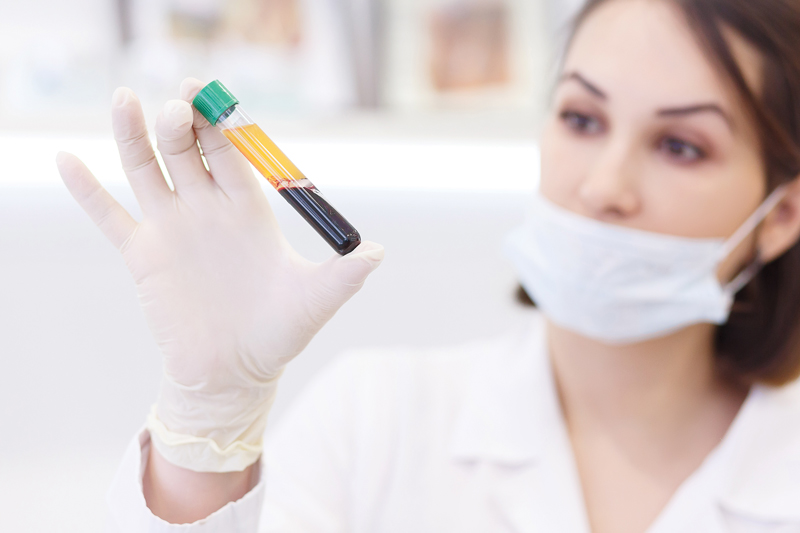Platelet Rich Plasma injections (PRP) are regarded as a revolutionary modality of care in the field of anti-aging/regenerative medicine. Due to the long-term complications that surgical interventions may entail, less invasive procedures like PRP are becoming extremely popular as a safer alternative than surgery in the optimal management of soft tissue injuries and chronic pain.
Platelet Rich Plasma, or PRP, is blood plasma with concentrated platelets. The concentrated platelets found in PRP contain large reservoirs of bioactive proteins, including growth factors that are vital to initiate and accelerate tissue repair and regeneration. These bioactive proteins initiate connective tissue healing for bone, tendon and ligament regeneration. They help to promote development of new blood vessels and help to stimulate the wound healing process.
PRP therapy, which takes approximately forty minutes to complete, begins with collection of the patient’s blood (essentially, a basic blood draw). The blood sample is placed in a centrifuge to separate the platelet-rich plasma from the other components of whole blood. Our providers will then inject the concentrated platelets into the site of the injury or pain. Platelets function as a natural reservoir for growth factors that are essential to repair injured tissues. The growth factors that the platelets secrete stimulate tissue recovery by increasing collagen production, enhancing tendon stem cell proliferation, and tendon cell-related gene and protein expression. These growth factors also stimulate blood flow and cause cartilage to become firmer and more resilient. PRP activates tendon cells to proliferate quickly and produce collagen to repair injured tendons, ligaments, cartilage, and muscles.
PRP therapy is the re-administration of your own platelets to activate the body’s natural healing process to help in repair and regeneration. High concentrations of platelets also stimulate the release of growth factors that further aid in tissue regeneration. PRP technique has been in use for over 2 decades, especially in the surgical field where orthopedic surgeons have used PRP to enhance the pace of healing. Various research studies have suggested that utilization of PRP can offer valuable benefits in soft tissue injuries as well as degenerative bone conditions such as spinal disc degeneration or arthritis. PRP is also used in aesthetics and dentistry.
Conditions Treated with Platelet Rich Plasma
Today, the data and statistical evidence on the effectiveness of PRP therapy is still in the early stages. Based on early clinical medical research done so far, the following injuries and soft tissue conditions respond well to PRP joint therapy:
- Achilles tendinitis
- Medial collateral ligament (MCL) tears
- Knee osteoarthritis
- Injuries to ligaments and muscles
- Chronic lower back pain
- Spinal stenosis
- Tennis elbow
- Acute and chronic tendon problems
- Joint fractures
- Plantar fasciitis
- Neck pain
- Rotator cuff tears
Benefits of Platelet Rich Plasma Therapy
Here are a few reasons why PRP is preferred over surgical interventions or other more invasive procedures:
- Platelet-rich plasma injections are extremely safe and do not affect the endurance, stamina or athletic vigor of patients. Additionally, there is limited down-time to the procedure.
- The risks of any side effects or long-term complications are very rare. Most patients report only mild side effects like localized pain lasting only a few days, some swelling and injection site stiffness.
- PRP injections are performed with local anesthesia.
Depending upon the initial extent of an injury, the overall process of healing may take a few weeks, and rarely, up to a few months. While most patients do not require more than 1-2 injections, you should know that complete regeneration of damaged collagen may require multiple sessions. In the early post-therapy period (2-3 weeks after the PRP injection), most patients report remarkable improvement in the severity of symptoms such as pain and discomfort.
Massaging the area before and after PRP treatment increases the blood flow to the affected area and improves results.
Alina Schneider, APRN and Meghan Chafee, APRN practice at the Center for Holistic Healthcare in Glastonbury and are trained and certified in PRP techniques for pain and aesthetics. 860.430.5300.
www.ctrforholistichealthcare.com.
